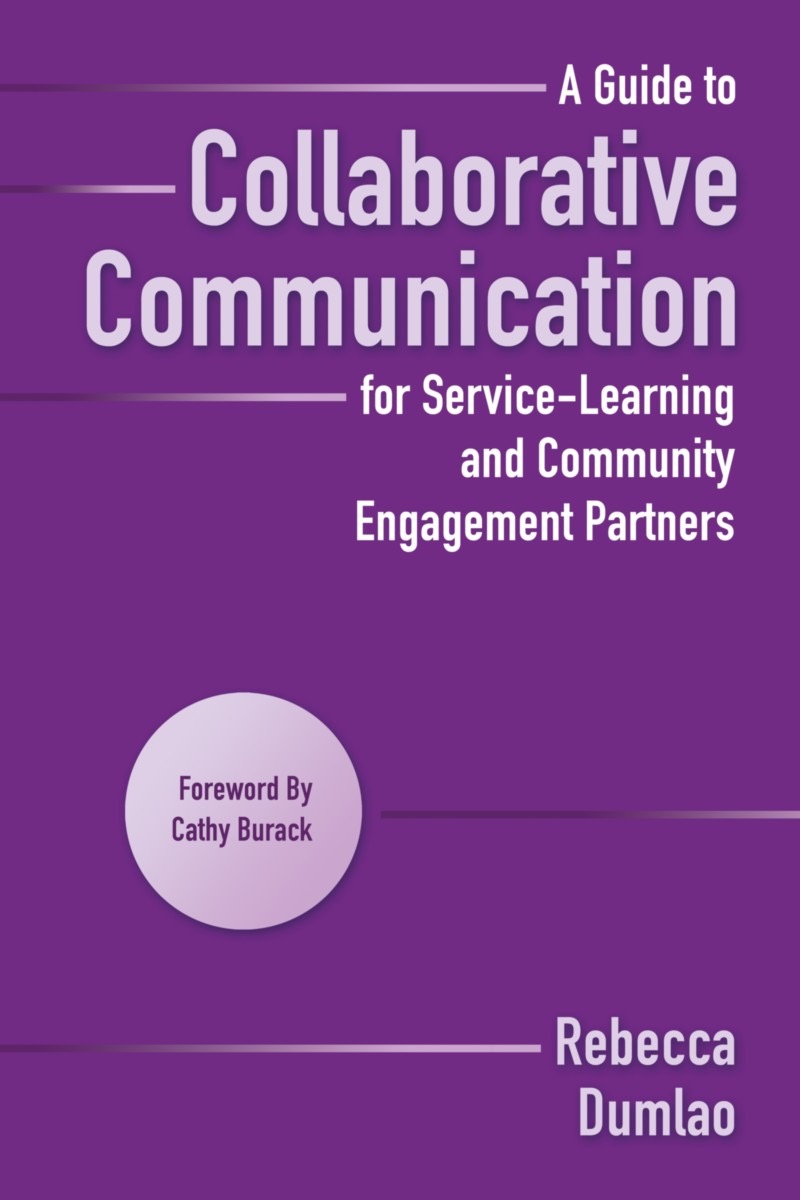service learning
Select an item by clicking its checkbox
Sex, money, politics: all the things we are told not to talk about. However, as the ethics professor at an Episcopal/Anglican seminary which draws diverse students from across the theological spectrum, teaching on these controversial issues is an important and challenging part of my job. As a professor, it’...
The first religion course I took in college was an introduction to the Bible, one of two required religion courses in our core curriculum. The students’ reaction to the course follows what, I suspect, is familiar terrain for those who teach similar courses. The application of academic tools to the ...
Date Reviewed: June 17, 2021
This book offers a conceptual framework of collaborative communication to build and sustain partnerships, recognizing that relationships change over time as the people involved and their circumstances evolve. Collaborative communication uses a repertoire of knowledge and skills that allow partners to make choices that fit their situation or context and to work through differences and challenges as they occur, to include managing conflict and navigating cultural differences. It further takes into account the different means of communication, whether face-to-face, using e-mail, text messaging, or social media. Readers will appreciate the numerous real world examples that illustrate and bring its key concepts to life.
This book is addressed to partners at all levels focused on community engagement and service-learning. It is intended for preparing college students to work more effectively in the community, as well as for workshops for community and campus members who work with service-learning students. It can equally be used in leadership workshops in academic and community settings. Scholars, students, or community members involved in community engaged research will also find useable ideas for their work.
The appendices offer an annotated bibliography of useful resources and provide readers with a repertoire of activities for building a collaborative communication repertoire. (From the Publisher)

Research on Student Civic Outcomes in Service Learning: Conceptual Frameworks and Methods
Date Reviewed: January 25, 2018
Research on Student Civic Outcomes in Service Learning: Conceptual Frameworks and Methods is the third volume in a series dedicated to research on service learning. This volume, with its timely focus on civic outcomes, is divided into three sections. It begins with an introduction to how student learning outcomes are embedded in service learning, then moves on to various theoretical frameworks by which one can situate research. It concludes with some nuts and bolts aspects of conducting research on student civic outcomes in service learning, defined as “a course or competency-based, credit-bearing educational experience in which students (a) participate in mutually identified service activities that benefit the community, and (b) reflect on the service activity in such a way as to gain further understanding of course content, a broader appreciation of the discipline, and an enhanced sense of personal values and civic responsibility” (10).
All three chapters in Part One are useful to the novice in this research area. “Introduction to Research on Service Learning and Student Civic Outcomes” provides a taxonomy of service learning courses, with essential attributes and levels of development for instructors to improve the quality of civic learning opportunities within service learning courses along with clear factors for individual as well as institutional research and assessment. “Student Civic Outcomes in Higher Education” offers a helpful literature review of civic outcomes, while ”Student Civic Learning through Service Learning” concludes Part One with two pertinent questions: (1) What do we know about cultivating civic learning through service learning courses? (2) What do we still need to learn about how the variables of course design influence civic learning? One key point repeated in each chapter is that civic outcomes in service learning should focus on learning with others and not doing for others.
Part Two explores research on civic outcomes in service learning through multiple disciplines and theoretical perspectives including social psychology, political theory, educational theory, philanthropic studies, human development, community psychology, critical theories, and activity theory. The chapter “Critical Theories and Student Civic Outcomes” most directly questions the “individualistic” and “server-centered” approach to service learning (184), noting, for example, that serving at a soup kitchen often counts as service learning but protesting does not (187). A critique of the AAC&U Civic Engagement VALUE rubric is particularly thought-provoking on issues of access and power (187-190).
Part Three turns more directly to the how-to of conducting research with chapters on quantitative, qualitative, and longitudinal research along with chapters on institutional characteristics and using local and national datasets. One of the most interesting chapters in this section, “Documenting and Gathering Authentic Evidence of Student Civic Outcomes,” asks “What counts as good evidence of learning and for whom?” (303). The chapter identifies two challenges familiar to those who work with assessment: making outcomes explicit and collecting authentic evidence (304-305). Unfortunately, much existing research depends on indirect evidence, and the chapter recommends use of the AAC&U VALUE rubric along with ePortfolios to enable formative and summative assessment.
Each chapter of the volume concludes with an extensive reference section. The volume is worthwhile for teachers and researchers who want to improve students’ service learning as a site for civic engagement.

Reflecting on Service-Learning in Higher Education
Date Reviewed: November 30, -0001
M. Gail Hickey has gathered together a valuable resource in Reflecting on Service-Learning in Higher Education. The chapters provide a vast collection of best practices and important principles to consider when engaging students in academic service-learning. The book is divided into three sections focusing on different perspectives for reflection: Community Partnerships, Classroom Practice, and Diversity.
Although the first section is titled “Reflection on Community Partnerships,” it is really more a reflection on institutional commitment to building community partnerships. The section has two provocative chapters that take the reader through a reflection on just what impact an educational institution should have within its surrounding community and how service-learning can help the institution attend to the voices of the community in which it is placed. Sherrie Steiner’s principles for implementing reciprocity provide a great framework for institutions and faculty to consider while developing service-learning curriculums. Joe D. Nichols asks important questions about the focus on research and specialization at the expense of community and civic engagement and draws from multiple sources to foster reflection around alternatives to faculty recognition of such public work.
“Reflecting on Classroom Practice” is the second and largest section of the book. Each chapter offers a perspective on how service-learning has worked in a particular context. This collection of cases from fields as varied as education, sociology, fine arts, and dental hygiene offers a myriad of suggestions for how to structure a curriculum that incorporates service-learning. There are suggested rubrics, logistical considerations, a solid bibliography with each chapter, and suggestions for what worked well and how one might improve the process over time. Readers will find this section full of ideas, suggestions, and methods focused on building a curriculum, partnering with community members, and methods for reflection with students.
The final section, “Reflecting on Diversity,” pushes even further into the questions that come up when students engage in service-learning with diverse communities. Here the case studies offer insights into how students perceive and articulate the impact of their service-learning on their growing sense of their own contextual lenses and the lenses of those with whom they work. Faculty and administrators are invited to anticipate the types of responses their own students will have in an effort to foster positive reflection and growth in the students that is fruitful for the partner communities as well.
One concern with the book is that community partners are not represented as writers of the chapters. The effort to shed light on the importance of effective community partnerships and the responsibility of higher education institutions to develop service-learning curriculum in partnership with the surrounding community is important. The inclusion of the voices of partner communities as authors could have added to the depth of the book.
Reflecting on Service-Learning in Higher Education is a resource that will be appreciated by high school and university faculty and administrators. The questions raised and the suggestions shared will be useful for any institution looking to begin or strengthen their commitment to service-learning in higher education. Institutions, faculty, students, and the communities with which they partner will all benefit from M. Gail Hickey’s invitation to reflect.


